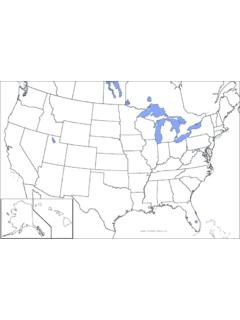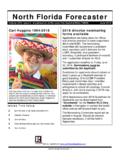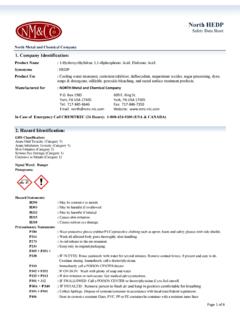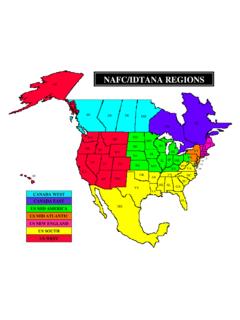Transcription of Successful prevention of non-communicable …
1 Public Health Medicine 2002; 4(1):5-7 Successful prevention of non-communicable diseases: 25 year experiences with NorthKarelia Project in FinlandPekka PuskaAbstractsThe paper describes the experiences and results of 25 years of noncommunicable disease prevention in Finland in theframework of the north karelia Project: from demonstration project to national activity. The Successful experiencesemphasize the need for theory based sustained activity, within a national policy framework. The paper discusses, notonly the marked changes in target risk factors and reduction in NCD rates in the population, but also the generalexperiences: constraints and keys for success. Some general recommendations and conclusions are diseases, coronary heart disease, lifestyle, community based prevention , national diseases and especially cardiovascular diseases (CVD) represent the major health burden in theindustrialized countries and a rapidly growing problem in the developing countries.
2 At the same time they are an areawhere major health gains can be achieved. In most of the developed world three out of four deaths are due to CVD,cancer, accidents and other violent causes. Globally CVD is responsible for every third death and coronary heartdisease (CHD) is already the number one killer in the medical research has, during the last few decades, been carried out to learn about the causes andmechanisms of these noncommunicable diseases. Research has involved large epidemiological studies within andbetween populations, basic biochemical and animal studies, intervention trials and large-scale community-basedpreventive studies. This research has clearly shown that CVDs or events leading to them have their roots in unhealthylifestyles or adverse physical and social factors as unhealthy nutrition, smoking, physical inactivity, excess use of alcohol and psychosocial stress areamong major lifestyle much will certainly still be learnt in the future, very much is thus known already to serve prevention .
3 Actually somuch is known that the main question for NCD prevention is not "what should be done", but "how should it be done".The key question is, how can the existing knowledge best be applied for effective prevention in real programmesCarefully planned community-based demonstration programmes form an important effort to help solve this problem. Thefact that there is a huge gap between the existing medical knowledge and every day situations in society, results fromseveral obstacles for healthy changes: cultural, political, economical, psychological, etc. The aim of a communityprogramme is to try to build a bridge for people and communities to overcome these the main risk factors had been identified by the beginning of the 70's, preventive studies and efforts were graduallydeveloped, including also major community-based preventive programmes. In the field of cardiovascular diseases, theNorth karelia Project was launched in 1972 in response to the record high mortality of CVD in Finland.
4 The projectbecame the first major community-based project for CVD prevention . It was soon followed by several other projects ofthe same kind. This activity in Europe was co-ordinated by WHO/EURO under the programme "ComprehensiveCardiovascular Community Control Programmes" (CCCCP). The experience was evaluated and published in the 80' on the development led to the WHO INTERHEALTH programme, and in the WHO European Region to the CINDI programme. Recently the American region of WHO (PAHO) has launched a similar programme called karelia Project: from demonstration project to national activityThe north karelia Project was launched in Finland in 1972 in response to the local petition to get urgent and effectivehelp to reduce the great burden of exceptionally high coronary heart disease mortality rates in the area. In co-operationwith local and national authorities and experts, as well as with WHO, the north karelia Project was formulated andimplemented to carry out a comprehensive intervention through the community organizations and the action of thepeople themselves.
5 Comprehensive activities have been used, involving health and other services, schools, NGO's,innovative media campaigns, local media, supermarkets, food industry, agriculture Project has included a comprehensive evaluation, and has acted as a major demonstration programme for nationaland international applications. Over the years the scope of the Project has been enlarged to include broader objectivesof integrated prevention of major noncommunicable diseases and health promotion, as well as prevention of risk relatedlifestyles in childhood and the original project period (1972-77) the experiences have actively been applied for national action. Numerousactivities have been launched involving health services, schools and NGO's. National expert recommendations andprogrammes have been prepared. Mass media and industry have been involved. Legislation and other public policy hassupported the development that has been monitored resultsThe published results of the north karelia Project show how over the 25 year period major changes have taken place inthe levels of the target risk factors in north Karelia4.
6 ' Among the male population in north karelia , smoking has greatlyreduced and dietary habits have markedly changed. In 1972 52% of middle-aged men in north karelia smoked. In 1997the percentage had fallen to 31%.In the early 70's use of vegetables or vegetable oil products was very rare; now it is very common. In 1972 about 90% ofthe population in north karelia reported that they use mainly butter on bread. Today it is less than 7%. The dietarychanges have led to about 17% reduction in the mean serum cholesterol level of the population. Elevated bloodpressures have been brought well under control and leisure time physical activity has been women, similar changes in dietary habits in cholesterol and in blood pressure levels took place. At the sametime, however, smoking some what increased, but from a low risk factors that changes were in the 70's significantly greater than in the original reference area. Then thechanges have been rather parallel in all Finland.
7 In the 80's some levelling off took place in the trends in north karelia ,but thereafter remarkably great changes took place concerning particularly cholesterol lowering dietary changes. Thishas been associated with major reductions in serum cholesterol 1995 the annual mortality rate of coronary heart disease in the middle-aged (below 65 years) male population inNorth karelia has reduced about 73% from the pre-program years (1967-71). This reduction was especially rapid inNorth karelia in the 70's and again after mid 80's. During the last ten years the decline in CHD mortality in north Kareliahas been approximately 8% per year. Among women, the reduction in CVD mortality has been of the same magnitudeas among the 80's the favourable changes began to develop also in all Finland. By 1995 the annual CHD mortality amongmen in all Finland has reduced 65%. At the same time the lung cancer mortality has also reduced, more than 70% inNorth karelia : and nearly 60% in all greatly reduced cardiovascular and cancer mortality the all cause mortality has reduced about 45%, leading also togreater life expectancy: approximately 7 years for men and 6 years for women.
8 Associated with favourable risk factorand lifestyle changes the general health status of the people has greatly improved. A separate analysis has shown thatmost of the decline in CHD mortality can be explained in the change in the population levels of the target risk factors,and that the reduction in serum cholesterol level has been the strongest the results indicate, the general experiences have been positive. Most of the planned activities have been feasibleand it has been possible to have this sustained activity over a long period of 25 does not mean that there have not been problems and constraints. In the early years the concept of communitybased prevention was alien, especially to the cardiological community that wasn't happy about the funding of theproject. north karelia was also a low socio-economic area with scarcity of medical resources and with many socio-economic problems in the 70's. The local culture was in many ways traditional, resisting change.
9 Dairy farming was amajor source of livelihood; butter was the local product much liked. The national dairy industry took major efforts andresources to protect their economic what were the keys to success? Obviously, several factors were important. The cardiovascular problem was bad inthe early 70's, there was common concern and the project activities were built upon this. The theoretical frameworkswere carefully outlined; in collaboration with WHO and other leading experts. This concerned both the strategy on riskfactors (choice of risk factors, population approach) and the social and behavioural frameworks (community approach -different theories).A key was community organization: working within the community with its numerous organizations and with strongpeople's involvement. Within the overall science-based framework the intervention was flexible, based on continuousmonitoring and feedback and taking advantage of the naturally occurring intervention used multiple strategies: from innovative media and communication activities and systematicinvolvement of primary health care (especially general practitioners and public health nurses) to environmental changes,collaboration with food industry and policy changes.
10 The project worked in close collaboration with national healthauthorities; its activities benefited from and contributed to national health term sustainable activity was also based on strong leadership and appropriate institutional basis. The overallnational co-ordination has been based at the National Public Health Institute (KTL) which is linked with the Ministry ofSocial Affairs and Health. Finally, the importance of international collaboration should be emphasized: the project hastaken advantage of international experiences and programmes (especially those of WHO) and also much contributed tothose related publication of the north karelia Project summarizes recommendations for similar projects as follows:6 Preventive community programmes should pay attention to the well-established principles and rules of generalprogramme planning, implementation, and evaluation. Preventive community programmes should be concerned with both appropriate medical/epidemiological frameworksto select the intermediate objectives, and with relevant behavioural/social theories in designing the actualintervention programme.

















